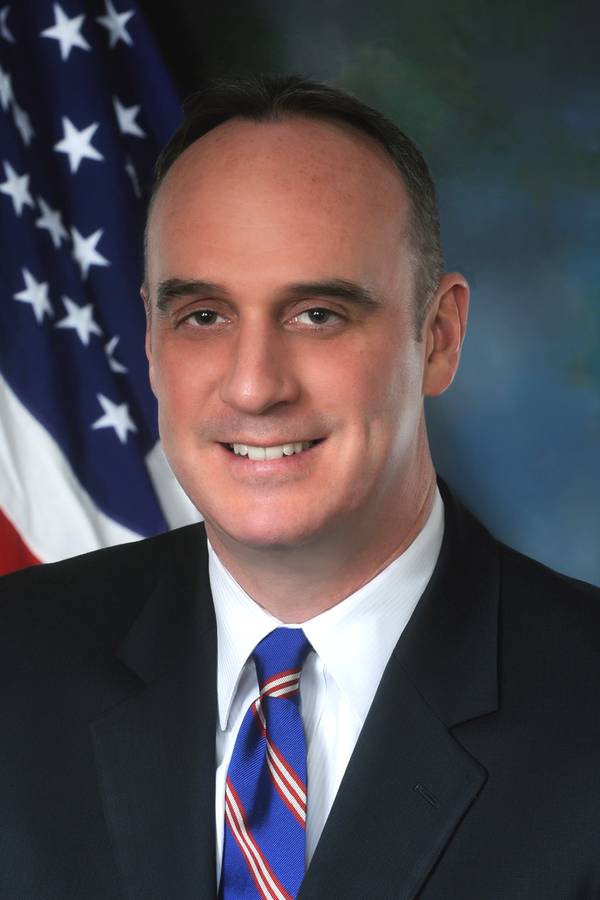FMC Commissioner Doyle Addresses Hanjin
Posted by Eric Haun
September 16, 2016

William Doyle (Photo: FMC)
U.S. Federal Maritime Commissioner William P. Doyle addressed Hanjin on September 15 in panel remarks at the annual FTR Transportation Conference in Indianapolis, Indiana. Below are remarks and discussion points from the panel.
The U.S. Federal Maritime Commission has received more than three dozen complaints. The categories of complaints include, import and export cargo stranded at sea on Hanjin ships; and export cargo stranded inside U.S. marine terminals with the MTOs requiring additional fees for the release of cargo so the shipper can dray the containers out of the terminal and then re-book; and shippers/truckers not being allowed to return empty containers; and problems associated with equipment such as chassis and leased containers.
On the equipment side we are facing a tough situation. The shippers are becoming very concerned not only about their inability to pick up inbound containers at the marine terminals but also in many instances they are not able to return chassis. Based on past experience during tumultuous times, we know that ocean carriers and marine terminal operators begin charging detention and demurrage charges that become extremely expensive in short order. The demurrage is charged for the shipper not picking up the container during the allotted free time. And detention is charged when a shipper does not return a chassis (or container) during the allotted free time. The FMC is monitoring this scenario closely. In the current state affairs, the shipper, through not fault of its own, is precluded from returning equipment and/or picking up cargo.
On the export side, the FMC jumped in quickly and help resolve some matters. The facts in one case pertained to a lumber and log exporter based out of the North Carolina and Georgia. This export product is considered low value cargo, but, nonetheless, it is all the value in the world for this particular small to medium size business. The shipper utilizes ports on all three coasts to export. On September 1, 2016 this shipper had containers destined for overseas markets, fully booked on Hanjin vessels, and inside the marine terminals waiting to be loaded. A few days into the receivership announcement, the terminal operators began issuing notices to exporters requiring them to dray the Hanjin containers back out of the ports. And, on top of the costs that the exporters would have to pay to dray-out, transload their goods into another container and book the cargo with another carrier, the shipper would be required to pay demurrage fees for the time the export containers remained inside the terminal. Well, for the U.S. exporters this was a terrible situation. One exporter had racked up fees in excessive of $225,000 in just a few days. The exporters simply wanted their cargo back so they could book it on other ships and not have to pay demurrage fees while the containers sat in the terminals collecting dust. I made some phone calls to various terminals and our bureaus within the FMC began inquiries into the charges. This was heading for a Show Cause Order issued by the FMC to the marine terminal operators regarding the additional fees. In the end, the terminal operator and shipper were able to resolve the dispute when the marine terminal operator substantially reduced the fees and the lumber exporter retrieved his cargo and re-booked it on another carrier.
With respect to empties there is a problem with the vessel HANJIN MIAMI that is afloat outside of the Port of New York and New Jersey. The vessel is scheduled to be unloaded at the Maher Terminal. The MIAMI, provided there is funding to unload the ship, could indeed be unloaded at Maher. However, there are so many disputes right now attached to empty containers that the terminal is not going to load the empties back onto the ship. And, if the empties cannot be reloaded on the vessel, then the ship will not be able to depart the harbor because it would not have the air clearance to navigate under the Bayonne Bridge-- even at a dead low tide. The empties act as additional ballast weighting the ship down so it can navigate under the bridge. One solution discussed could be that empty containers owned or controlled by other ocean carriers could be loaded on the MIAMI.




